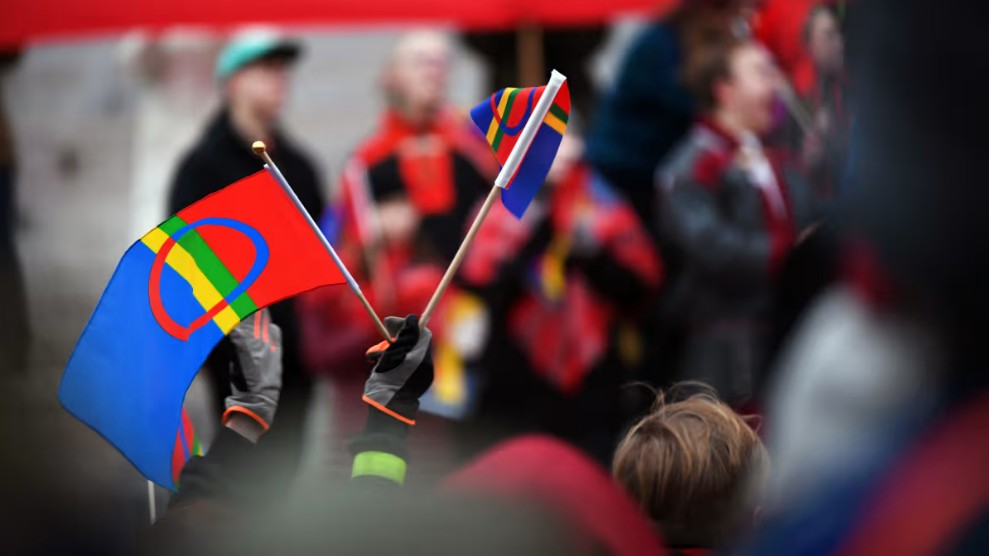Finland marks Sámi National Day

The flag’s distinctive red, green, yellow and blue design was inspired by the Sámi people’s relationship with the sun and the moon.
A number of cities and towns across Finland are marking Sámi National Day by flying the Sámi’s distinctive red, green, yellow and blue flag on Tuesday.
Although 6 February is not an official flag day, authorities in Finland, Sweden and Norway have recommended that the flag be flown — and an increasing number of towns and municipalities, government agencies and institutions outside the Sámi region have taken up the practice.
The anniversary marks the meeting of the first-ever Sámi Congress, which was held in the Norwegian city of Trondheim in 1917.
The sun and the moon
The flag was officially adopted by the Sámi people in 1986, following a design competition won by Norwegian Sámi artist Astrid Båhl.
Båhl recalled that when she was designing the flag, she was particularly interested in the special relationship the Sámi people have with the sun and the moon — and she wanted to reflect that in her design.
“I was told that in the old days, the rising moon was a time for slaughtering reindeer and gathering hay. It was a time for work that you couldn’t do during the waning moon. I thought, ‘well, that sounds like a good fit for the Sámi people’,” Båhl explained.
The flag contains two asymmetrical rectangles superimposed with vertical lines running through a circle, with the red circle representing the sun and the blue circle the moon.
The flag Båhl designed has gone on to become a well-known and important symbol of Sámi identity.
“It is designed to be relevant in this modern age. The flag is special because it features indigenous colours and decorations,” Båhl said, adding that she is happy with her “very beautiful design”.
Sámi bill in the pipeline
Sámi identity and right to self-governance have been widely discussed topics in Finland’s recent history, with PM Petteri Orpo‘s (NCP) government becoming the fourth administration attempting to bring a controversial Sámi Parliament Act before the legislature.
If approved, the bill could change how a voters’ roll for elections to the Sámi assembly is compiled, potentially removing some who are currently on the electoral roll — a proposal that has drawn criticism.
The reform ran into difficulties during Sanna Marin‘s tenure as prime minister because of its potential impact on land use rights, as there have been fears the changes would give the Sámi Parliament too much power over land use within Sámi territory, which could affect mining and wind power projects.
Related stories from around the North:
Canada: “We still have a lot of healing to do with our fellow Canadians” – National Day for Truth and Reconciliation observed September 30, Eye on the Arctic
Arctic: Sami-led project seek to revitalize Indigenous across Arctic Europe, Eye on the Arctic
Finland: Finland prolongs Sami Truth and Reconciliation Commission through 2025, Eye on the Arctic
Greenland: Danish PM apologizes to Greenlanders taken to Denmark as children in 1950s, Eye on the Arctic
Norway: Can cross-border cooperation help decolonize Sami-language education, Eye on the Arctic
Sweden: New chairman appointed to Sweden’s Truth and Reconciliation Commission, Eye on the Arctic
United States: “This isn’t just about Native people, this is about America,” say truth commission advocates, Eye on the Arctic



